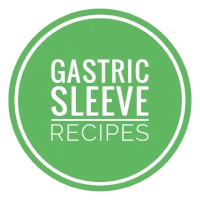Dietary Cholesterol
By Farah Palomas, RD
Content:
What is Cholesterol?
What foods contain cholesterol?
How much is too much cholesterol?
Types of cholesterol
What is cholesterol?
Cholesterol is a type of fat that our bodies produce to build hormones, bile acids, new cells, and to insulate nerves (1). Just like saturated fats, it is not necessary to ingest cholesterol through food.
What foods contain cholesterol?
Dietary cholesterol is only found in animal food sources, especially in those with high levels of saturated fat such as beef, pork, cold cuts, and dairy products. Plants do not produce it, so any plant-based food (vegetables, fruits, legumes, grains, etc.) is free from it. When eating animal-based foods it is important to choose lean proteins such as tuna and chicken breast to avoid consuming too much cholesterol and saturated fats. You can read more about fats here.
How much is too much cholesterol?
The Dietary Guidelines for Americans suggests keeping the intake of dietary cholesterol as low as possible (4). But how much is as low as possible? It is recommended to limit the amount of dietary cholesterol to no more than 300 mg per day. If you suffer from an existing heart disease this limit could be even lower. And how much does this translate to? To put it in perspective, eating just 2 egg yolks would put you over the limit (equal to 373 mg). This means that if a patient has 2 full eggs for breakfast, they should not eat any other animal source foods for the rest of the day, otherwise they would be putting their health at risk (Note: therefore, we recommend sticking to egg whites only)(2).
High blood cholesterol levels are in many cases indicative of heart disease or being at risk of heart disease (1). It is recommended to do blood analysis every 6 to 12 months to track your levels and adjust your diet as needed.
Types of cholesterol
LDL or Low-density lipoprotein: Often referred to as “bad” cholesterol. These particles transport most cholesterol to all cells and tissues in our body. The problem comes when there is an excess of these particles as they may oxidize and lead to fat deposits along the artery walls that block the passage of blood, which increase the risk of heart disease. LDL levels should be lower than 100 md/dl.
HDL or High-density lipoprotein: Often referred to as “good” cholesterol. These particles collect excess cholesterol out of blood vessels and and take it back to the liver. In other words, they help clean our arteries (3). HDL levels should be 50 mg/dl or higher for women and 40 mg/dl or higher for men.
Conclusion
Eating excess amounts of animal food sources may lead to an increased intake of saturated fats and cholesterol. Remember that although there is an upper limit to cholesterol intake, it is recommended to keep it as low as possible. It is also important to be mindful of the foods you consume daily to make sure you are including the most nutritious options that will protect your health.
We hope you enjoyed reading this article and that it may serve you to make better eating choices! Remember that as a premium member you can always contact our nutritionists with any additional questions.
Not a premium member yet? Subscribe here
Already a member? Contact nutritionist he
References:
Beckerman J. Cholesterol and Heart Disease. WebMD Website. https://www.webmd.com/heart-disease/guide/heart-disease-lower-cholesterol-risk. Accessed November 4, 2018.
Blesso C, Fernandez M. Dietary Cholesterol, Serum Lipids, and Heart Disease. NCBI. https://www.ncbi.nlm.nih.gov/pmc/articles/PMC5946211/. Published March 29, 2018. Accessed November 6, 2018.
Steinbaum S. HDL Cholesterol: The Good Cholesterol. WebMD Website. https://www.webmd.com/cholesterol-management/guide/hdl-cholesterol-the-good-cholesterol. Accessed November 5, 2018.
Cholesterol. FDA Web site. https://www.accessdata.fda.gov/scripts/interactivenutritionfactslabel/factsheets/Cholesterol.pdf. Accessed February 10, 2019.


